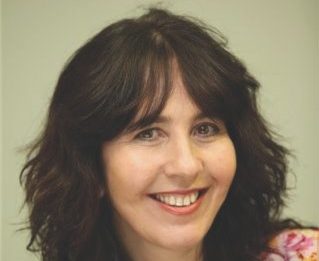click to dowload our latest edition
CLICK HERE TO SUBSCRIBE TO OUR NEWSLETTER


Published
4 years agoon
By
adminPETA KROST MAUNDER
I spent time in Andalucia, the south of Spain, which is one of the most beautiful parts of the world. I was extremely fortunate to be there, and loved every minute.
But there are very few Jews living in the areas I went to, particularly Granada and Seville, which were once centres of Jewish life in the world. In fact, the Jewish community was once so central to the city, it was called Garnatha al Yehud (Arabic for Granada of the Jews).
When we arrived in Granada and asked how to get to the Realejo area, the person at the information desk at the station said, “Aah, you want to go to the Jewish quarter!” It turned out that any Jewish reference was pure history, and the only evidence of Jewish life in Granada was the single Jewish man living there who had created a tiny museum in his house.
In Seville, we also found little evidence of Jewish life.
There are no shuls – as we know them – in either city today.
In Seville we sought out the only Jewish guide there, a wonderful man called Jorge Gershon, to enquire about the Jews of Seville. As it happens, before the Spanish Inquisition, there were 23 magnificent shuls in a community that numbered an estimated 50 000.
It turns out we were sitting at a coffee shop in the Barrio de Santa Cruz – what was once the Jewish centre – just metres away from Crosses Square. It was here that an estimated 4 000 Jews were murdered in 1391 just because they were born to our faith and not keen to give it up. I felt quite sick as I looked around and saw no trace of our history other than a small museum called the Centre of Interpretation of the Jews of Seville. In its pamphlet, its owners wrote, “We feel duty-bound to dedicate a place in the heart of Seville to the Jewish-Spanish tradition, to the Sephardic memory.” I understood the need to make a Jewish mark, however small, where none remained.
As we sat with Gershon, I asked about the Jews who live in Seville today. He told us there are about 32 families, and anyone over the age of 40 is an immigrant or there only temporarily. Some are from Argentina, Venezuela, the United States, France, even Israel. More than 50% of them are involved in education. They number so few that if you ask Sevillanos if there are Jews living in Seville, they will probably say no. Also, quite simply, those who live there don’t proclaim their Judaism very loudly…
As Jews do, I asked about Shabbos services, and Gershon told me we were welcome to join them for Friday night service, but for safety, we needed to email a request.
So, come 18:30 on Friday evening, we found ourselves at the address, which looked like a beautiful Medieval Muslim palace or mansion. We certainly didn’t see anything that resembled a shul or a collection of Jewish people dressed for Shabbos. Eventually, I went to a Spanish woman at the front desk to ask if she knew where the Shabbat service was. At first she looked at me quizzically, and the said something that sounded like “Jewish” and “Jorge”, and motioned for us to follow her.
We walked up a few of flights of stairs, along a number of corridors, down a few stairs and another passageway before eventually finding a room not much bigger than a child’s bedroom. There were seats all along the walls and on one wall, I saw machzorim, siddurim, and tanachim in a bookcase and knew I was in the right place. Our guide handed us over to Gershon, who seemed happy that we came.
Every one of the 12 casually-dressed people – mostly women – were very welcoming. As we walked in and siddurim were passed our way in Spanish, Hebrew and phonetics, I began to feel comfortable. And once Gershon began what sounded like a very traditional Shabbos service, I felt quite emotional.
Here we were, a long way from home, having heard about what had happened to the incredible Jewish population of southern Spain, and we were surrounded by our people. All strangers, but not strangers at all. We shared a long, long history, and so much more.
After the service, we went for a drink, which is clearly their tradition before going home for dinner. None of them were specifically observant, but all were traditional and wanted to be with fellow Jews over Shabbos and festivals. They make a real effort to keep the community together and keep their tradition and culture alive.
I left feeling happy to have had the experience, but so grateful for what we have in South Africa.
Coming home meant coming to our community, where if I wanted to, I could go to any number of incredible shuls near or far from my home. We have so many thriving congregations, each with their own character and dynamic rabbis.
We also have a thriving greater community, where none of us are afraid to say we are Jews. We are loud and proud, and should anyone say or do anything against us, we come down on them like a ton of bricks.
Coming home to this community is precious, but I can’t help feeling seriously disconcerted to learn that the Anglican and Methodist Churches in South Africa have joined hands with BDS (the Boycott, Divest, Sanctions movement) against Israel.
After learning what was done to the Jews in the name of the church in Spain, I don’t believe we should ignore this.
Having said that, I have no doubt our small but powerful, close-knit community will do whatever it can to preserve what we have.
Shabbat Shalom!
